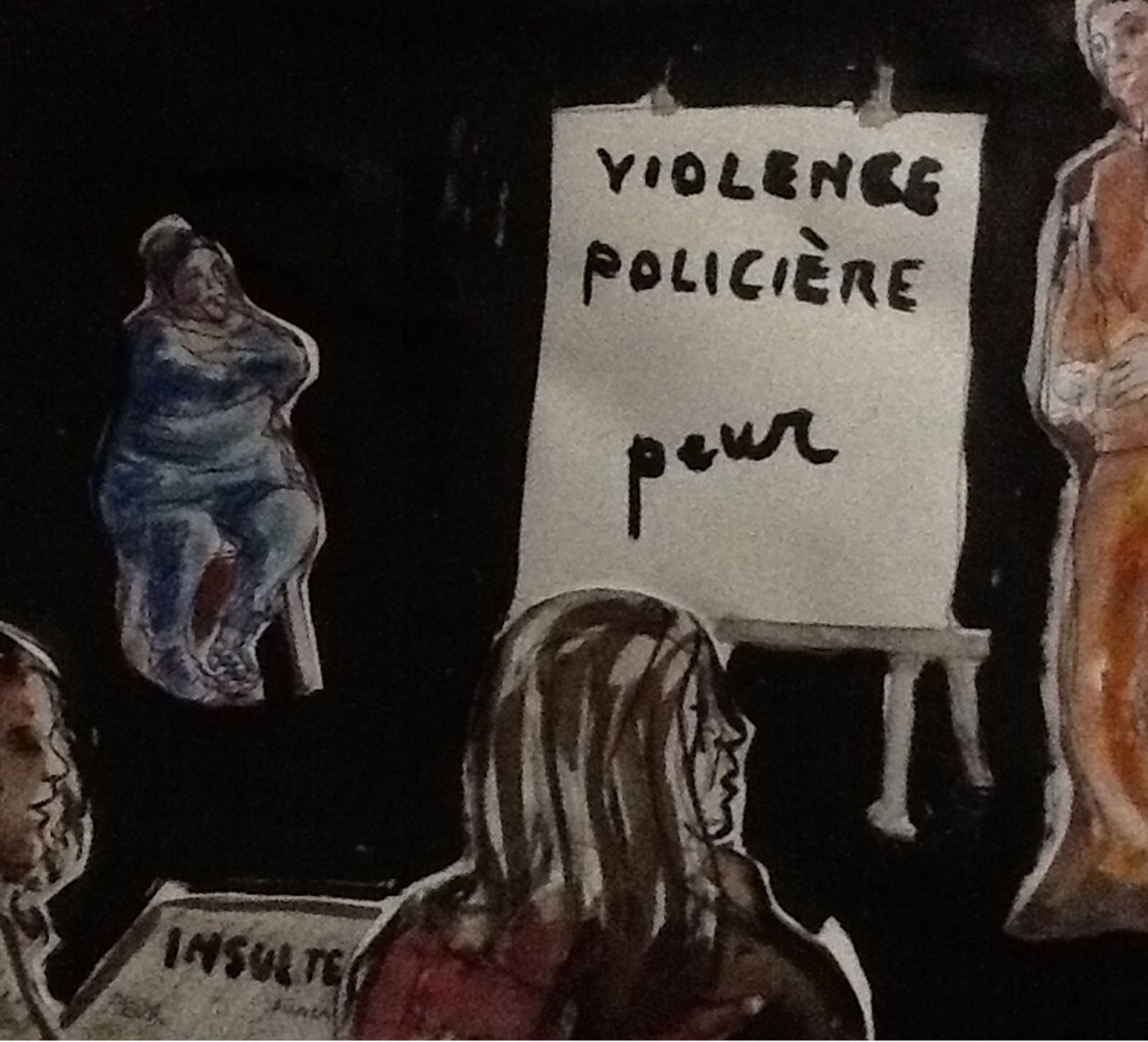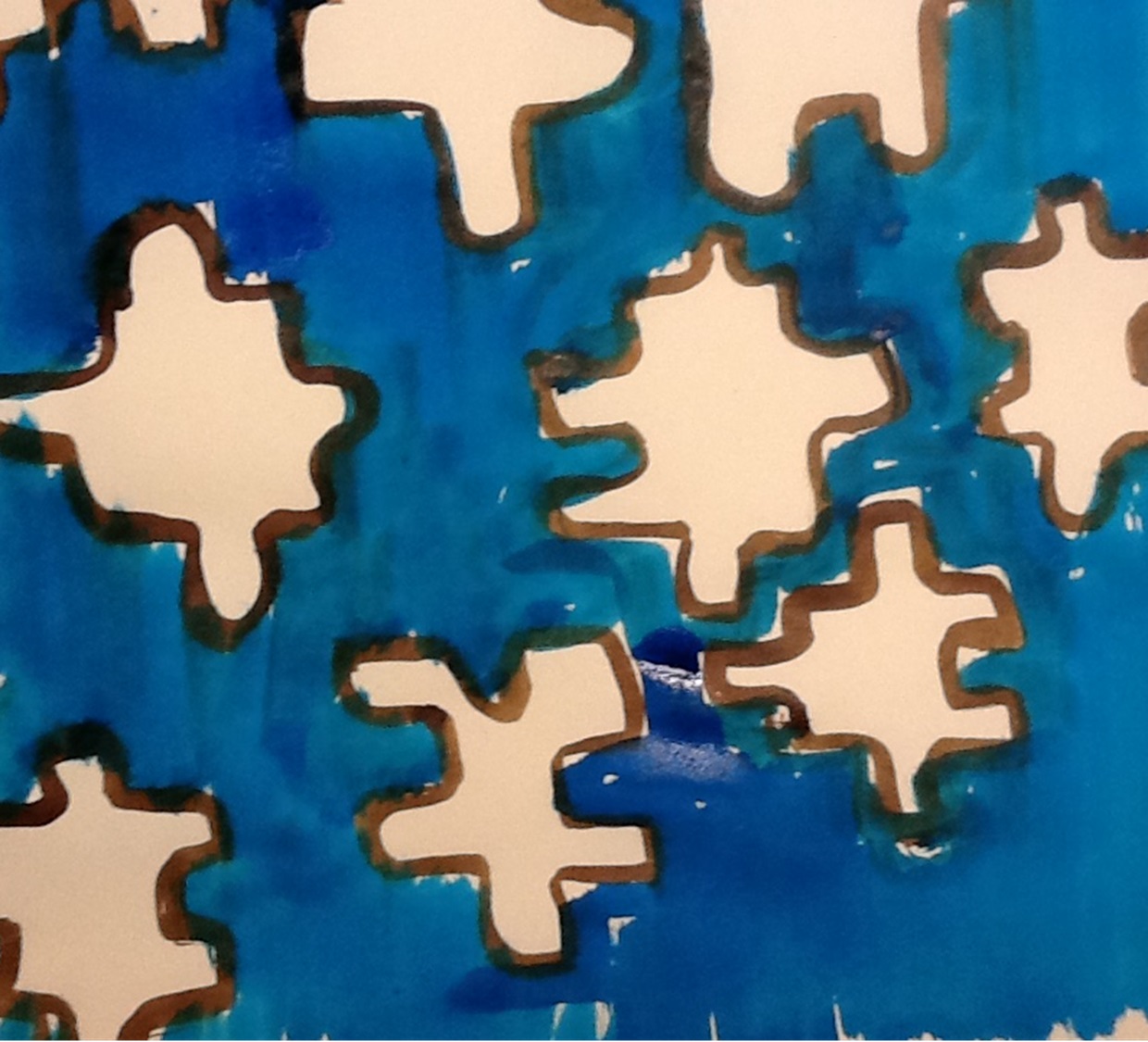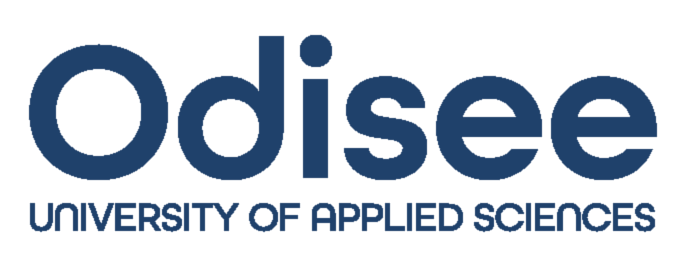Welcome to the digital platform of the Urban Diversities course!
The main aim of this course is to strengthen the capabilities of future social professionals to intervene in situations that involve urban tensions and complexities. The course consists of a community service learning (CSL) trajectory at the local level, combined with virtual transnational exchange, lectures, discussions and reflections. We are very happy that you will be joining us in this adventure. The Course Manual will guide you.
Description of the piloting process
In the Spring semester of 2020-2021, we were piloting this course.
On this page, we give some general information on the Urban Diversities course.
Course name Urban Diversities
Course date February 2021 – June 2021 (Spring semester)
Institutions
- Manchester Metropolitan University
- Odisee University of Applied Sciences
- Turku University of Applied Sciences
- University of Applied Sciences Utrecht
- University of Debrecen
Course language English (and national languages locally)
Credits 5 ECTS (national variations possible)
Field Social work, Community work
Mode Online learning and community service learning
Level Bachelor
Enrollment practices Follow practices of each participating university
Learning objectives
Urban diversities is an international course. It helps students to cross borders in more than one way. Students work with peers from other countries, communicate in a transnational community, and work together with professionals, urban residents and lecturers from different institutions. A cross-border perspective helps to understand the construction of social work theory and practices within a specific context and may thus enable students to reflect on the possibilities of transformation in their own context.
The main aim of this course is to strengthen the capabilities of future social professionals to intervene in situations that involve urban tensions and complexities. More concretely, the module has the following learning objectives:
| Urban diversities | |
| Acquire knowledge of: | 1. Human needs, human rights and social justice
2. Theories on identity and diversity 3. Social work approaches to urban complexities |
| Acquire skills to: | 4. Identify and analyse community needs, assets and interests from various perspectives
5. Use participatory methods in working with individuals and/or groups 6. Be creative in finding arenas of participation in communities 7. Cooperate in interdisciplinary, intercultural and international teams 8. Develop a practice-based body of knowledge |
| Develop reflections on: | 9. Inclusion, exclusion, power (im)balances, strengths and challenges
10. The personal learning process 11. The joint development of a practice-based body of knowledge |
Learning and teaching methods
During the course the students participate in a local and an international team.
The focus of the local team is on Community Service Learning. The students cooperate with social professionals, local residents and lecturers. They explore with them the needs and assets within the neighborhood and find out how they can contribute to the development of the community. In this way, students gain experience in professional practice. Reflecting on this with each other (reflection-in-action) creates a powerful learning process.
In the international teams (see the schedule in the International Classroom page), students exchange experiences. They present their experiences in practice using case descriptions and they compare the practical experiences in the different cities and countries. Students reflect on each other’s experiences and include multiple perspectives (reflection-on-action).
The reflection in the international teams will be enriched with theoretical concepts provided in the webinars and literature. The various theoretical perspectives serve as tools for increasing understanding of practice. The insights gained in the international teams are taken back to the local teams. This creates an interaction between reflection-in and reflection-on action.
The learning process from practical experience towards the development of a transnational theory of practice is called inductive learning; it involves learning where concrete experiences are related to theoretical concepts. Conversely, the process of translating theoretical insights into practical experiences is called deductive learning. Inductive and deductive learning processes are intertwined. A theoretical concept such as social capital, for example, can help to understand own experiences when dealing with community residents.
As such learning leads to the understanding of meaningful relations and the development of a practice-based body of knowledge (theory in use). These connections arise on many levels: between one’s own experiences and the experiences of community residents, between one’s own experiences and the experiences of students from other countries, and between practical experiences and theories.
Case studies play an important role in these learning processes. Case descriptions help to put the practical experience into words and provide a context. Case descriptions can also help to make abstract concepts concrete and therefore easier to understand. It is for these reasons that case descriptions are used in both local and international teams, as well as in the webinars, to facilitate reflection and to create meaningful relations.
Students prepare the international classrooms by reading texts or watching videos put in the online platform two weeks before the webinar. The specific preparation required for each meeting is indicated in the International Classroom page.

International exchange is an important component of the Urban Diversities course. Therefore, we organize an international meeting every three weeks. During these meetings, there will be several web lectures to guide and support your work, as well as discussions and reflection, individually and in groups.
Each meeting (3 hours) will have the same structure:
- Opening and introduction by the chair of the meeting (10 min)
- Questions of students (10 min)
- Webinar: presentation by lecturer and discussion (60 min)
- International team meeting: student teams work independently supported by a coach on inductive process (reflect on practice experiences CSL) and deductive process (align theoretical concepts to practice) (90 min)
- Plenary concluding part (feedback and feed forward)
The schedule also contains links to the pre-assignments (what you should read, watch, do… as a preparation of this meeting).
1. Kick-off meeting
Welcome
Introduction to the course
Working with the online platform
Web lecture: Community Service Learning – introduction video
International student teams: introduction
2. Meeting
Web lecture: Community Service Learning – part 2
Working with the assets within a community: video, pdf
International student teams: Development of practice-based body of knowledge
3. Meeting
Web lecture: Superdiversity and Intersectionality video
International student teams: Presentation of the needs analysis
4. Meeting
Web lecture: Urban Complexity video
International student teams: Development of practice-based body of knowledge
Discussion of cases with citizens and professionals
Student Teams
5. Meeting
Web lecture: Experience-based and tacit knowledge
Cultural humility
International student teams: Development of practice-based body of knowledge
Student Teams
6. Meeting
International student teams: Development of practice-based body of knowledge
7. Meeting
• Welcome! Presentation of the visitors
• Pitches of the international Feedback after each pitch
• Local creative products
• Closure of the international classroom.
Assignments
NEEDS ANALYSIS: GET TO KNOW THE NEIGHBORHOOD
The first step of the community service learning (CSL) is the needs analysis, where the students get to know the neighborhood they will be working in. This assignment is carried out in local CSL groups.
Aims
After completion of the community needs analysis students will be able to identify the nature of a particular urban setting, identifying needs and strengths within particular communities or groups living in these urban settings.
Instructions
In community needs assessment it is important to consider both needs and assets. Assets can be understood as strengths, potentials, capabilities that allow people to fulfill their own and others’ needs.
Bradshaw (1977) famously identified a taxonomy of needs: normative need, felt need, expressed need and comparative need. Normative need refers to what an expert, professional or a social scientist defines as need in any situation. For example, a ‘desirable’ standard of health outcomes, income or housing and where these standards are not being met by someone can be defined as being in need. Normative need is not absolute but refers to desirable standards and may even be tainted by middle class norms to assess working class lives although where these may include to working class aspirations that may seem reasonable. They are also often represented in newspaper articles about certain communities or individual groups.
Felt need is equated with want, in a democracy it would seem reasonable to ask people what they need and is often used in community development and participatory practice and research. It is positive to ask the young people or service users what they feel they need from our services. It is also more likely if we do that the services we propose will better meet their needs.
Expressed need is felt need turned into action. This is where people demand a service, one would not demand a service unless it was needed. It is often used in health services in response to waiting lists but can also be found in relation to services for migrants, needs for play areas for young children, people with disabilities, safe communities etc.
Comparative need is a measure of need by studying the characteristics of those receiving a service. If people with similar characteristics are not receiving a similar service, they can be viewed as being in need. The definition has been used to compare not only individuals but areas and gives credence to the idea of the ‘post code lottery’ that if you live in certain areas you will receive greater levels of services than those in other areas.
Needs can be felt by an individual, a group, or an entire community. It can be very concrete (e.g., need for shelter or transportation) or as abstract as improved community cohesiveness or integration. Examining communities or particular groups within communities and using the typology of need above will allow you to structure your analysis from the perspectives of professionals, those who would be in receipt of any services, the demand for services and their comparison with what is offered to other groups or communities will help you gain a deeper understanding of the community you engage with. In doing this you are looking at community or individual needs but do not forget to also consider individual and community strengths. Every individual or community also has its own strengths and assets, a unique web of relationships, history, tensions, strengths, and conflicts and successes that define it. Also be aware of tensions in relation to diversity and polarization along with the intersectionality of some of the issues you may find e.g. potential challenges for a gay young disabled migrant living in a working class area.
The assessment process benefits greatly when there is participation from community residents and stakeholders (service providers, officials, community activists, business owners). The best way to assess needs and assets is by collecting and analysing a diverse range of data and information including official data in terms of local or national statistics. Reports produced by local agencies or non-government organisations, advocacy groups, newspapers articles, social media. This will help you identify gaps and decide what methods you will use for gathering information (public forums, interviews and focus groups, observation etc.) and decide who is best to supply this information.
Please be aware of local and national operating procedures in relation to safe Covid-19 working.
Outcomes and evaluation
Students give a presentation with their local CSL team about the needs analysis during the international classroom.
These presentations should contain the following elements:
• An introduction to the urban setting in which your CSL will take place (use local and national statistics).
• The methods you used to collect information about this group or community.
• The needs of the group or community at focus (as identified by the group or community themselves and other stakeholders).
• The strengths of this group or community (as identified by the group or community and other stakeholders).
• A story or a case which embodies or exemplifies your needs analysis.
The presentations will be assessed with pass or fail, based on the evaluation of teachers and peers. Evaluation criteria are:
• Quality of the needs analysis
• Presentation skills
• Defense (Q&A)
The quality of English language is not included in the evaluation, unless it hinders the understanding of the products.
References
Bradshaw, J. (1972). Taxonomy of social need. In G. McLachlan (Ed.) Problems and progress in medical care: essays on current research (pp. 71-82). Oxford University Press.
Center for Community Health and Development. (2020). Assessing community needs and resources. In Center for Community Health and Development. Community Tool Box (Chapter 3). University of Kansas.

Community service
Aims
This assignment is carried out in local CSL groups. After having engaged themselves in an urban community, collective, or in an organization, students are able
• to map, describe and visualise their interventions and actions as fellow citizens.
• to identify and narrate the crucial experiences and scenes in which they were challenged, moved and motivated as fellow citizens.
• to communicate what they have learned through these key experiences as fellow citizens.
Instructions
During the first two international meetings, students are made familiar with the concept of community service learning. Community service learning will take place in the local context of each partner university.
Outcomes and evaluation
• Each student keeps a diary of their actions, experiences as fellow citizens. This diary is personal and will not be evaluated. It does, however, form important input for the creative product, personal reflection and pitch.
• Each local student team prepares a creative product in which they discuss what they’ve learned from their CSL experiences, based on their personal diary and exchanges in local and international teams. They can use the digital story on CSL as an inspiration but are also free to choose another creative product (a poem, a painting, …). They send this product to the lecturers from their home institutions. All products will be posted on the learning platform.
The products will be assessed with pass or fail, based on the evaluation of teachers and peers. Evaluation criteria are:
• Creativity of the chosen product
• Quality and depth of the content
The quality of English language is not included in the evaluation, unless it hinders the understanding of the products.

Reflection
This assignment is partly an individual assignment, partly a group assignment for the international teams.
Aims
Students are able to reflect on their experiences, on a personal level as well as on a theoretical level (developing a practice-based body of knowledge).
Instructions
In social work practice many situations give rise to reflection. Most of practical questions do not offer ready-made solutions. A good understanding is necessary to choose the appropriate approach. This is related to instrumental but also ethical perspectives: what is right in this situation and am I doing the right thing? When you come to implement your plans, it turns out that reflection does not stop but continues. Social work is a profession in which ill-structured situations are frequently encountered: complex situations that are difficult to understand and where standard solutions are lacking. Reflection occurs where social workers doubt about a problem that cannot be solved by logical reasoning. It begins with a problem or a sense of discomfort and where further exploration is necessary, where the right questions are indispensable for a better understanding.
Reflection is a ‘key element’ in learning from experience (Moon, 2004) which helps to prevent repeating the same actions and experiences and helps to learn from experiences and to change. Donald Schön (1974) distinguishes two forms of reflection that are applicable to social work: reflection-in and reflection-on-action. Reflection-in-action occurs at the same time when action take place, Reflection-in-action coincides with executive action, it promotes a different view of a situation, a reframing of a problem using knowledge that comes from practice experience (theories in use). Reflection-on-action occurs after action, at times when you have the opportunity to look back on what happened, with more distance, using multiple perspectives.
You can reflect alone at various times and you can also reflect together with others, which brings several perspectives into the picture and enriches your own reflection. Joint reflection in international cooperation- which is the case in our project – goes further because you are confronted with other cultural and political contexts that make you aware of your own person and world view. It can contribute to the disappearance of the obviousness of your own frame of reference and, in its place lead to the emergence of new horizons of meaning. As such reflection contributes to meaning-oriented learning processes and a revision or reinterpretation of the meaning of previously acquired knowledge.
Reflection can focus on different things. Reflection in social work education is often used to increase self-knowledge and the ability to self-direct the learning process. Reflection related to practice performance increases the awareness of one’s own actions in practice situations, the implicit assumptions within them and the effect of one’s own actions on others. Reflection can also be used to become aware of underlying mechanisms such as power structures and exclusionary and repressive mechanisms.
In other words, reflection contributes to the ability not to take one’s own and others’ knowledge of situations for granted. It helps you to see that knowledge can be uncertain, often depending on the social context (King & Kitchener, 2004). In social work, it is part of the deliberation processes in which solutions to practice problems are constantly being constructed.
Outcomes and evaluation
• Personal reflection (Individual assignment)
Based on the CSL, theory and international exchange, each student writes a report (max. 1000 words) with a reflection on the personal learning process and results. In this report the student compares the personal learning with the learning outcomes and describes the significance of the learning experiences for personal and professional development. Students e-mail this report to the lecturers at their home university by June 6. This report may be written in the language of the home institution.
The individual reflections will be assessed with pass or fail, based on the evaluation of the lecturers.
Evaluation criteria are:
• Description of the learning experiences
• Quality and depth of the personal reflection
• Objectives: realistic, clear, according to the learning goals
• Theoretical reflection (group assignment for the international teams)
Each student studies generic mandatory literature and country specific self-selected literature. The literature delivers a theoretical lens on micro, meso and macro level. In the international student teams students reflect the alignment between their practice experiences in CSL and the theory presented and studied during the course. Each international student team prepares a pitch of 10 minutes, that will be presented during the final meeting of the international class (June 2).
The pitches will be assessed with pass or fail, based on the evaluation of teachers and peers.
Evaluation criteria are:
• Quality and depth of the theoretical reflection
• Creativity of the pitches
• Presentation skills
• Defense (Q&A)
The quality of English language is not included in the evaluation, unless it hinders the understanding of the products.
Overview


Learning material
The course focuses on the following key concepts:
Society
• Democratic citizenship,
• Social Inclusion, social cohesion
• Inequality, segregation, marginalization
• Human Rights, social justice
• Societal tensions and conflicts
• Complex needs in deprived, diverse urban settings.
• Super diversity, migration
• Urbanization
• Poverty
• Social determinants of health
• Decolonization
Social Work profession
• Community development ABCD approach
• Anti-discriminatory and anti-oppressive practice
• Intercultural social work
• Conflict resolution (e.g. nonviolent communication
• Participative action research
Literature overview
Essential articles (must-reads)
Claes, E., Schrooten, M., McLaughlin, H., Csoba, J. Community Service Learning in Complex Urban Settings
Hyperlink: https://deb.tuas.fi/urban/wp-content/uploads/2021/02/Claes-et-al-CSL-in-complex-urban-settings.pdf
Ferlander, S. (2007). The Importance of Different Forms of Social Capital for Health. Acta Sociologica 2007.
Hyperlink: https://deb.tuas.fi/urban/wp-content/uploads/2021/02/Ferlander2007.pdf
Schrooten, M., Withaeckx, S., Geldof, D., Lavent, M. (2016). Transmigration: Social work in a world of superdiversity. Acco. (Chapter 1: Transnational living in a superdiverse society)
Hyperlink: https://deb.tuas.fi/urban/wp-content/uploads/2021/02/Schrooten-et-al-transnational-living-in-a-superdiverse-society.pdf
Recommended reading
Bradshaw, J. (1972). Taxonomy of social need. In G. McLachlan (Ed.) Problems and progress in medical care: essays on current research (pp. 71-82). Oxford University Press.
Hyperlink: http://eprints.whiterose.ac.uk/118357/1/bradshaw_taxonomy.pdf
Center for Community Health and Development. (2020). Assessing community needs and resources. In Center for Community Health and Development. Community Tool Box (Chapter 3). University of Kansas.
Hyperlink: https://ctb.ku.edu/en/table-of-contents/assessment/assessing-community-needs-and-resources/develop-a-plan/main
Social Work with Romani and Traveller Children Webinar: https://www.basw.co.uk/resources/accompanying-documents-and-resources-social-work-romani-and-traveller-children-webinar





